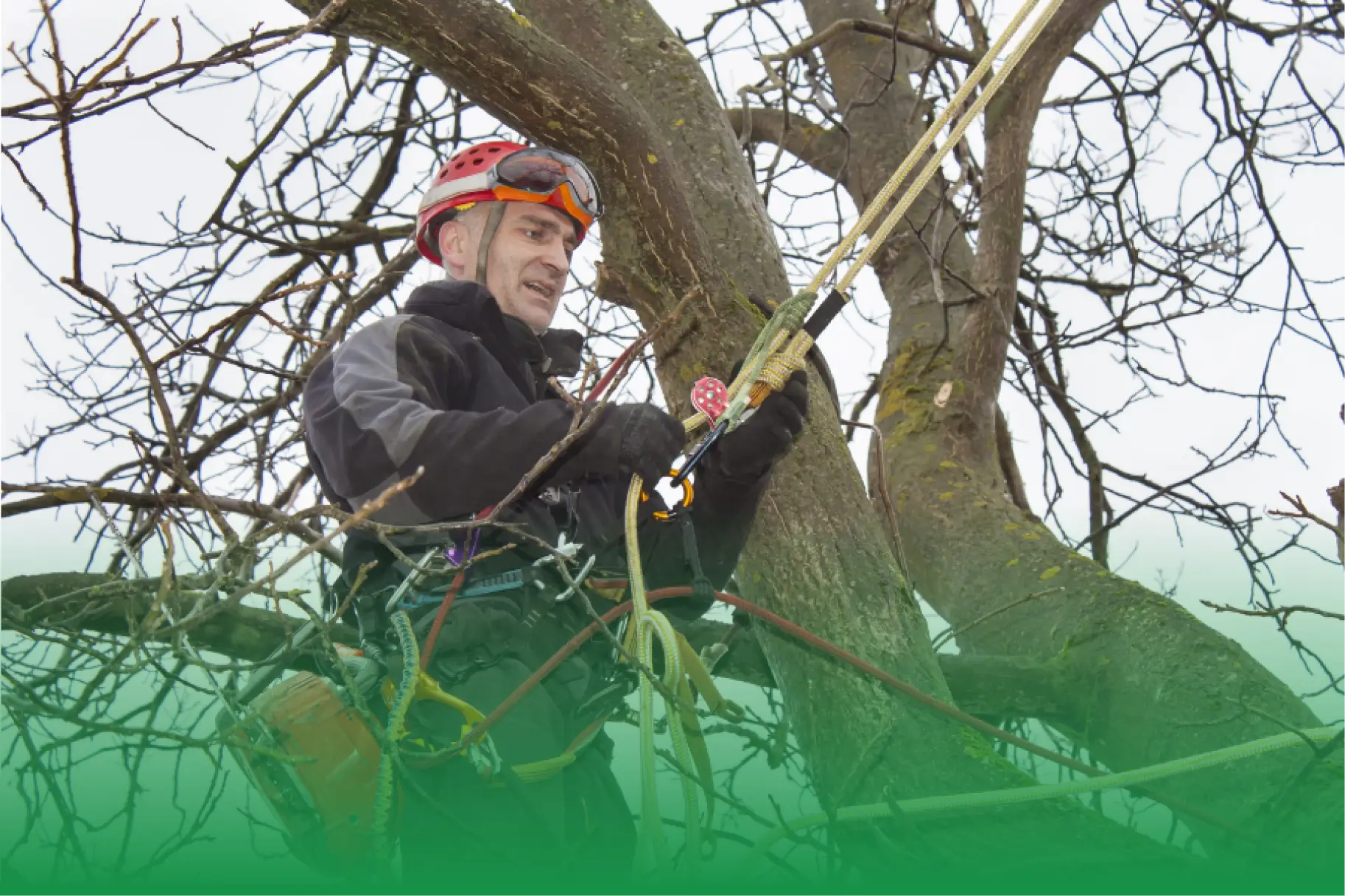Effect of Urbanization on the Health of Trees

Urban landscapes have many advantages, but they also come with unique difficulties particularly in maintaining the health of city trees. The health of urban trees has become essential for environmental sustainability as cities grow larger and urbanization becomes more pronounced. This paper will discuss the impacts of urbanization on tree health as well as effective strategies for mitigating these effects to ensure that our green assets thrive even in bustling metropolitan areas.

Effects Of Urbanization On Tree Health
Limitation Of Space And Soil Compaction:
In cities, very little is set aside for trees which leads to overcrowding their root systems. Soil compaction occurs when heavy foot or vehicle traffic presses down on the soil making it difficult for air, water and nutrients to reach tree roots. Growth can be severely stunted by this hence reducing structural stability in such cases where professional intervention like cabling and bracing may be required so as not to compromise their safety.
Pollution:
Trees in towns are always exposed to different kinds of pollutants such as chemicals carried by air currents or metals found within soils. These substances can weaken them by destroying leaves and roots thus slowing down growth while at the same time increasing susceptibility towards diseases and pests attack. Therefore frequent checking up should be done on their health status coupled with immediate interventions whenever necessary.
Heat Islands:
Cities tend to trap more heat than surrounding rural areas do due to what is referred to as an “urban heat island effect”. Extreme temperatures brought about by this phenomenon can stress out trees especially those living in hot regions . When stressed through heat exposure they demand more water making them vulnerable during drought periods .
Water Management Problems:
Urban surfaces are often impermeable causing improper drainage after rains which might lead into waterlogging while lack thereof during dry spells cause drought conditions around trees. Both situations are harmful hence efficient management of water becomes vital part care for urban plants.
Physical Damage:
Trees frequently get injured during constructions, maintenance works or just normal city operations. Therefore it is necessary to protect them from harm during such activities and enlighten people on the importance of conserving trees.

Strategies To Counter Negative Impacts Of Urbanization
Tree Care And Maintenance:
Regular pruning, mulching, pest control among other practices are necessary for urban tree care. ArboStar’s tree service software is an example of a comprehensive management tool that can be used by arborists in maintaining records and scheduling regular maintenance effectively.
Advanced Planning And Designing Of Cities:
Integrating trees into urban planning can greatly help reduce negative impacts brought about by urbanization. Planners and developers need to consider what urban trees require at design stage which includes giving them adequate root space as well as safeguarding against potential damages.
Innovative Arborist Practices:
Modern arboricultural methods like tree cabling not only provide physical support but also help improve their ability to withstand stresses associated with living near cities. Technological advancements within this field such as Arborist CRM software enable better management of tree care among professionals.

Public Awareness And Community Involvement:
Educational programs aimed at enlightening communities about benefits associated with having trees within towns may encourage joint effort towards their conservation. Initiatives driven by members themselves can lead to increased protection and advocacy for these plants that grow in built up areas.
Legal Structure and Policies:
To push for regulations that make it obligatory to think about conserving trees in urban development plans is important. It is possible to considerably improve the health of the metropolitan trees as well as their sustainability through policies that enforce integration of green spaces in city planning.

Case Studies and Success Stories
Singapore and Vancouver serve as examples where cities have successfully managed trees in urban areas by incorporating green infrastructure with advanced arborist practices. These cities have shown that urbanization can go hand in hand with tree health if appropriate methods are used; they employed such technologies as ArboStar, which helped them streamline their operations thus proving this point right.
Conclusion
Urban trees are vital for our well-being since they do everything from cleansing air to promoting mental wellness. These valuable resources can be safeguarded against the negative effects of urbanization through understanding its impacts on them. Arborists, city planners, and communities need to collaborate to ensure the prosperity of urban trees. Leveraging a tree service app can simplify tree care management, improve monitoring, and enhance conservation efforts in metropolitan areas.













